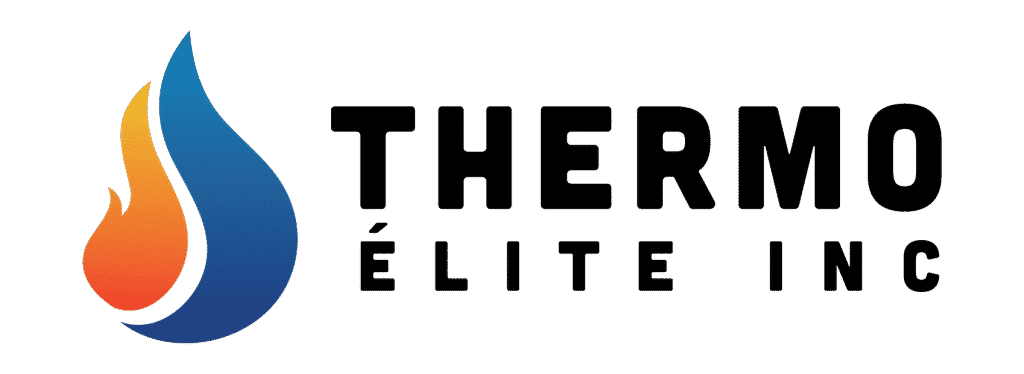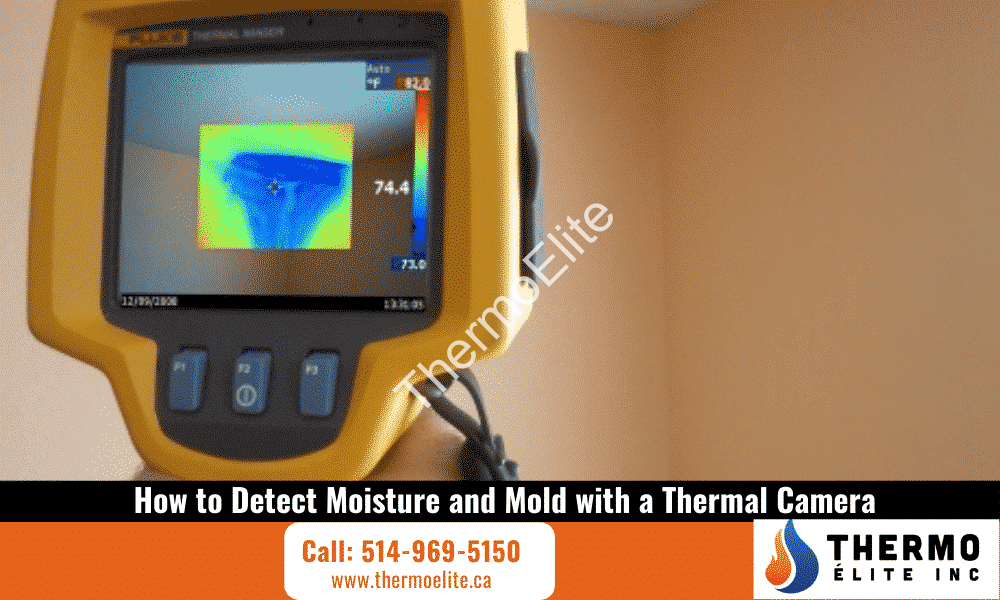Are you concerned about potential moisture and mold issues in your property that can harm your health and reduce your property value?
Do you want to ensure that your property is thoroughly assessed for these issues to prevent potential damage?
Discover the benefits of using a thermal camera to detect moisture and mold and gain peace of mind about your property’s safety and efficiency.
Moisture and molds behind walls, ceilings, and under floors are the most common challenges faced by some property owners as it is impossible to detect them with a naked eye. With the advent of the latest gadgets and technology, the solution to the problem is not too far behind. Thermal Imaging is one such incredible method of detecting heat from any living things and mechanical equipment when exposed to heat, which makes them visible even in pitch darkness. Thermal imaging cameras are gaining significant popularity in detecting moisture and mold in buildings in such areas where rainstorms are frequent and are prone to high-risk for the growth of moisture and molds.
When it comes to moisture mapping, an entry-level imaging device can well do the assigned task of analyzing the moisture and molds in a residential property.
How Does Thermal Imaging Works?
The moisture and molds emit radiations into the environment, commonly known as ‘heat signatures’. Depending on the heat spilling by the objects in the nearby area, they get captured through these thermal devices. A small amount of heat is enough to get these radiations to be captured in an imaging device. The thermal cameras can show the heat differences in buildings, walls, ceilings, and even floors. The moist areas or wet surfaces have a temperature difference as compared to the dry areas due to the factor of evaporative cooling. The moist areas tend to appear more than the dry areas on the thermal cameras, which help to find and fix the issue. These devices are capable of measuring the heat differences from the wet areas, thereby compiling full-fledged measurements known as ‘heat maps’, commonly distinguished by red and yellow colors on the screen.
The True Culprits
Often, people complain that the underlying problem is mold, but the exact problem is water because these molds can’t thrive without water.
The biggest fear faced by the real estate investors is building leaks because moisture reduces the condition of building components and helps in developing the condition for moisture and molds to grow and thrive in the buildings. Reducing or minimizing the negative effects of water in a controlled manner does not allow its growth into a building. For this purpose, proper fenestration and designing of the building are necessary. Construction defects, plumbing errors, and design flaws enable the entry of water which is referred to as true culprits for moisture damage to buildings.
What to Look for in an Imaging Devices?
The use of a thermal imaging device depends on specific environmental conditions on which you are going to carry out the inspection. However, two key factors serve as the quality differentiators for thermal cameras: thermal sensitivity and resolution of a camera. The pixel resolution of a camera is described by the number of pixels in it.
Thermal sensitivity is referred to as the ability of an imaging camera to display a clear image, even if there is not enough light in the nearby area. If you simply put it in another way, a camera with better sensitivity can distinguish objects in an area that has little temperature difference between them.
Using Thermal for Moisture and Mold Claims
You can save a tremendous amount of time by taking the help of these thermal imaging devices, and it will examine a substantial area, providing a quick, and systematic survey of your building. Thermal imaging cameras can show moistures and molds when they are used in the appropriate conditions. The walls or surfaces which has moistures or mold will appear differently than the nearby area. The residential owners are strongly recommended by the IR professionals to use these cameras for the detection of moisture under the following scenarios:
- Check for necessary signs of water leakage after flood, broken pipes, equipment failure, leaked roofs.
- Before buying out a property do a double-check on the property which is susceptible to damp walls or having hidden moisture damage.
- Lack of proper answers by the audit inspector when the basement walls are covered by finished materials.
- The doors, windows, or any other openings in the house are suspected of water-leakage.
- Finding out the leakages or dampness which are often remains hidden under solid flooring.
- Proper thermal inspection of the roof for water retention, plugged drains, or potential sources of water leakage.
Thermal Imaging Camera and Infra-Red Camera, which one is better?
The heat generated from a particular object is easily captured through an Infra-Red camera, whereas if you want to locate moisture or mold, then the thermal camera is the ideal solution as it measures the differences in temperature between an object and its surrounding area.
Advantages of a Thermal Imaging Camera
When you are trying to find molds and moistures for your house, the thermal camera provides some advantages in locating the source of these problems. The latent moisture creates apparent thermal patterns that are readily visible through the cameras which are not seen easily by the human eye. The main functionality of the cameras is to detect these temperature differences between a dry area and a moist area. The entry of water and excessive moist areas will get captured by the thermal devices.
Moisture detection with Thermal Imaging Cameras
As a residential owner, the best way to prevent these molds and moisture or significant damage to your property is to inspect your house regularly. With the help of these devices, you can perform this job in a very easy and simple manner.
When you start an inspection, identification of high-risk areas of water leakage, stains, or any intrusion of moist areas associated with visual pieces of evidence of discoloration is necessary. Proper scanning for locating the source of the problem can be done through a high-resolution thermal imaging camera. As the temperature of the wet areas will be a lot cooler than the dry areas, moisture is easily visible by thermal imaging devices as dark regions.
Can Thermal Imaging Cameras Find Mold?
The answer to this question is a little tricky one. Yes, and No. The areas which are having excessive moisture, then there is likely a chance for molds to grow.
The one mold which grows and thrives on moist areas is Stachybotrus, which is itself very sticky and wet. The thermal devices may show a patch of mold growth. Typical identification between a wet spot or mold is tough, as mold can grow without the help of active moisture.
Why Thermal Imaging is Essential for Detecting Moisture Damage?
The affordable and ready availability of thermal imaging cameras has increased their and nowadays, they are being introduced to a new word “building forensics investigation”. More and more building contractors are combining the latest technology with their building skills for making more meaning and precise assessments in the industry for expanding their business.
Thermal imaging is being adopted by some insurance carriers to identify excessive moisture in interior walls and surfaces. Detection of water damage, reduction of unforeseen conditions is managed through the thermal imaging devices.
Water accumulation is overlooked in the investigation process, or sometimes it requires breaking up of certain pipes and walls for locating the source of the problem. Therefore many building inspectors are implementing thermal imaging devices for solving water leakage and moisture problems
Watching the weather for Success
The optimum time for water testing and maintaining proper control in temperatures is of utmost importance during rainy seasons. For better results, you also need to keep in mind the differences in temperatures from outside and inside the building area. To conduct a successful imaging test, you also need to inspect and consider the weather aspects of your region.
A hot/warm climate is conducive for the better conduct of thermal inspections, as the air conditioner is cooling down the interiors of your house. The water which is used for testing is a lot cooler, which creates temperature differences for showing the best thermal measurements.
The outer exteriors of the house such as stucco are permeable enough to absorb the water and keeping the moisture, helping in improved exterior shots than the siding, in which the water gets hidden behind the thick planks.
Conclusion
Teaming up with the industry experts will help you in getting better results whenever you wish to purchase a house. Don’t be misled into thinking this is an easy job. Education and experience play a determining role in the identification of moisture problems and carefully mapping them to their sources. This is the time for the technicians to gear up on technology and its uses.
Last but not the least, when faced with moisture mapping, it’s ideal to consult with proper and experienced building experts. This will help in getting rid of moisture and mold in your house.



Add Comment